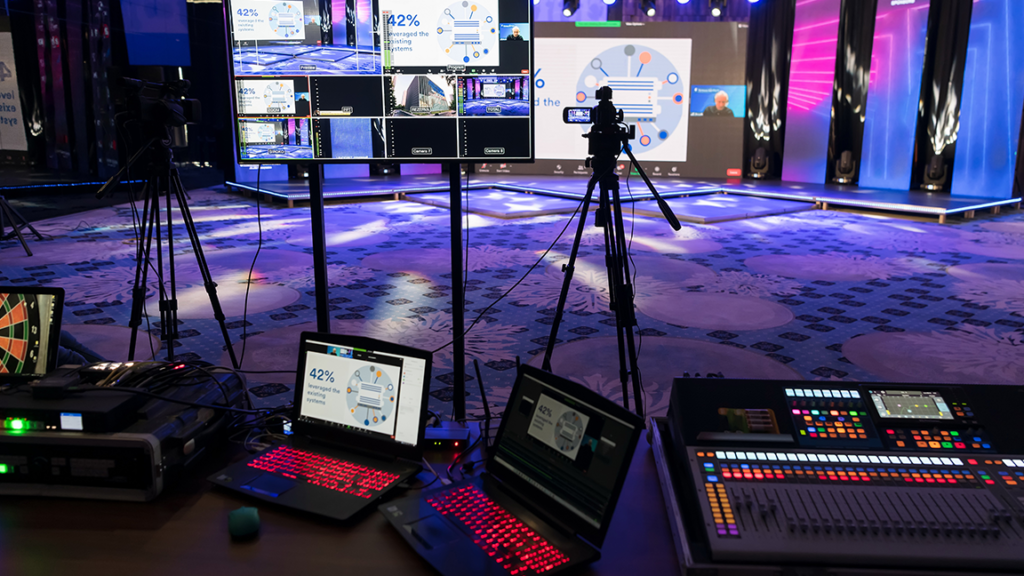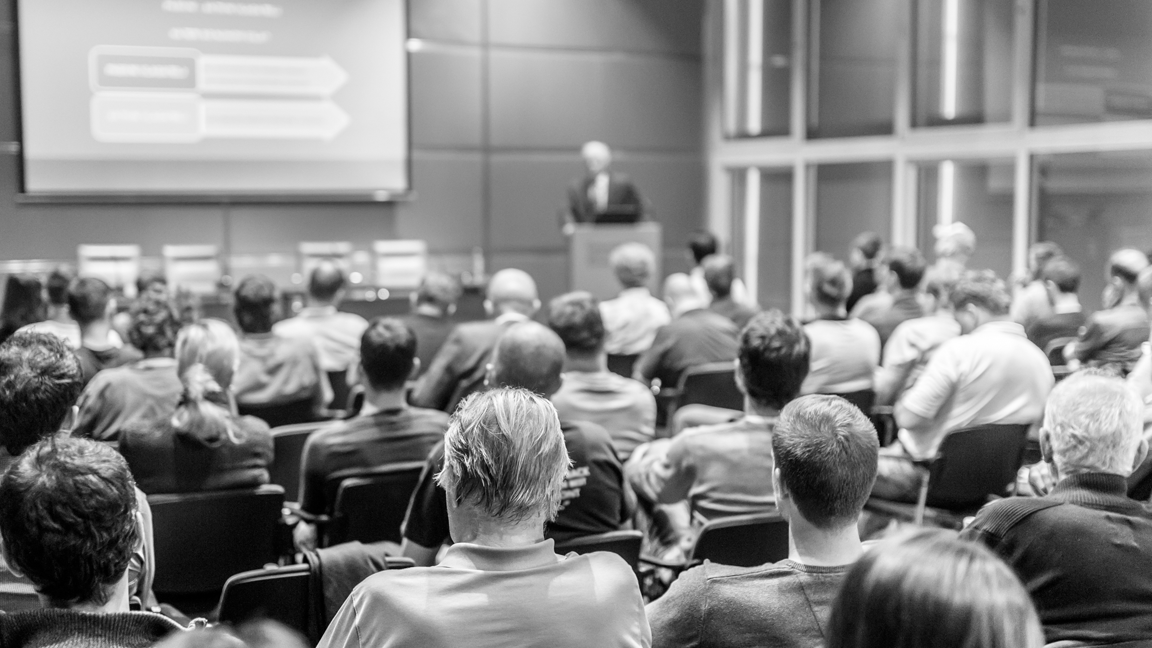Not All Delivery Modes Are Created Equal

Understanding the best and most engaging way to deliver content to an audience is key. There are varying reasons and costs involved in the development and delivery of different modes of content, and as a result it’s important to understand which delivery method you wish to utilize.
First, let’s look at the delivery modes you should consider using.
Meeting/Workshop (Many to Many)
- A conversational presentation
- Key presenter or group of presenters who want to collaborate and interact ‘face to face’ with their audience
- Breakout rooms
- Audible questions from participants.
- Both audience and presenters are on camera
- Examples (Zoom ™, Webex Meetings™, Microsoft Teams™, GoToMeetings™ and many more)
Webinar (Presenters to Many)
- Video delivered thought leadership from one or many presenters to a targeted audience
- Muted on entry
- Chat room
- Opportunity to ask text-based questions
- Polling
Streaming (Venue to Remote Audience)
- A venue, either physical or virtual to deliver a live stream directly out to their target audiences
- Chat room
- And/or moderated text-based questions & answers
- Real time feedback features
Broadcast (Venue to Many)
- Multiple media forms
- Pre-recorded videos
- Speaker names displayed
- Animated graphic stinger
- Announcements via a newsfeed ticker tape experience
- Pushed out to a single or sometimes multiple streams; These could be streams to social media platforms, physical venues, or a virtual event platform
As we move through the modes above, it becomes clear that there is increased complexity in the delivery of the experiences. It is important to look at the content you wish to deliver and choose the delivery mode based on the interactivity and professionalism with which the content needs to be consumed.
Let’s take an example of a one-day event and see how the delivery mode should be chosen based on the desired engagement outcome.
| TIME | PROGRAM SEGMENT | DETAILS | MODE |
| 9:00 am | Virtual Session #1 – Keynote Session Welcome & introduction by event host |
|
Broadcast |
| 9:45 am | Side Bar Live Q&A with Keynote Speaker |
|
Webinar |
| 10:30 am | Thought Leadership Session #1 |
|
Webinar |
| 11:00 am | Brain Break |
|
|
| 11:15 am | Thought Leadership Session #2 |
|
Broadcast |
| 11:45 am | Engagement Activity #2 –Networking Session |
|
Meeting |
| 12:15 pm | Brain Break |
|
|
| 1:30 pm | Thought Leadership Session #3 |
|
Webinar |
| 2:15 pm | Engagement Activity #3 –Participant Workshop |
|
Meeting |
| 2:45 pm | Virtual Session #3 – Speaker uses Workshop output in session |
|
Meeting |
| 3:00 pm | Wrap up & Closing Session Speaker |
|
Broadcast |
Each mode of delivery has a significantly different price point. Due to experience gained over the past 2 years, we encourage our client to reduce their overheads by delivering the first two, or at least the first mode internally if resources allow, and leveraging outside services when requiring Streaming and/or Broadcasting needs. We have evidence to prove that starting and ending the day with a very polished broadcast enables attendees to leave the event feeling like it was worth their time and cost to attend.
Have an agenda that you would like to discuss? Let’s have a virtual coffee to determine the best mode for your audience, as not all modes are priced or deliver equal experiences.

Categories
- Bee Wisdom (21)
- Business Intelligence (1)
- Case Studies (1)
- DE&I (1)
- Events (8)
- Experiential Marketing (2)
- Featured (3)
- Hyperlocal Events (1)
- Insights (48)
- Marketing (1)
- Pro Tips (33)



